I’ve been here 5 days now. I arrived on Monday evening, and woke up on Tuesday morning exhausted but wanting to explore. So we spent the day - a very hot, beautiful sunny day (what a change from the last few weeks at home!) – wandering through Bilbao, so that I could get a feel for the place. I then went into a decline for the next three days – just very tired, I think! So pottered around at home getting stuff done, doing some work, starting this blog, having early nights, catching up with The Archers (sad, I know)and I’m Sorry I Haven’t a Clue, etc. – and now am feeling much better, raring to go…
I wrote about first impressions of the Casco Viejo (old town) in my last post. In the afternoon of that first gloriously sunny day, we also wandered down the river to see the Guggenheim and other elements of the regeneration of Bilbao. The river is a very striking feature of Bilbao – a wide and curving corridor through the centre of the city, now with six or seven bridges across it. It’s several miles to the sea from Bilbao, but by the time it has left Bilbao it has become an estuary. Past the old town, it widens as it goes through the old docking and industrial area of the city. This is the bit that went into a terrible decline in the 80s and 90s and has been regenerated in a quite spectacular way since then – with beautifully designed esplanades, bridges, housing, a new tramline, new university and museum buildings, and the Guggenheim.
As the pictures below should show, a sunny day with a deep blue sky is a great time to see the Guggenheim, creating wonderful light effects on the titanium shell of the building. The combination of water, light and sky is great. Interesting to see the way the museum was integrated into a rather unattractive road-bridge across the river, too. I haven’t been inside yet, but will report on that later.
We wandered back through parts of El Ensanche (the new town, across the river from the old town), though we still have a lot more to see there. It’s much bigger than the Casco Viejo, and it’s where the city’s life really happens in terms of business, government, shopping, culture, etc. Built in the second half of the nineteenth century, it’s a classic European city centre, though perhaps less idiosyncratic than many other cities. As it was built from scratch 150 years ago, its 19th century grid system didn’t have to be imposed (as in Paris, etc.) on older streets and buildings.
As I write, I’m listening to (and half-watching) the BBCSO playing Bruckner’s 8th (superb – listened to a lot when I was 17/18!) in the Proms. Because Pietro has a VPN connection to the Oxford University network, our computer can pretend to be in Britain, which means that we have access to the iplayer (not generally available on le continent.) It also means that we have full access to academic journals online, which will be extremely helpful for work.
So here we are, a little corner of Oxford in Bilbao…
I wrote about first impressions of the Casco Viejo (old town) in my last post. In the afternoon of that first gloriously sunny day, we also wandered down the river to see the Guggenheim and other elements of the regeneration of Bilbao. The river is a very striking feature of Bilbao – a wide and curving corridor through the centre of the city, now with six or seven bridges across it. It’s several miles to the sea from Bilbao, but by the time it has left Bilbao it has become an estuary. Past the old town, it widens as it goes through the old docking and industrial area of the city. This is the bit that went into a terrible decline in the 80s and 90s and has been regenerated in a quite spectacular way since then – with beautifully designed esplanades, bridges, housing, a new tramline, new university and museum buildings, and the Guggenheim.
As the pictures below should show, a sunny day with a deep blue sky is a great time to see the Guggenheim, creating wonderful light effects on the titanium shell of the building. The combination of water, light and sky is great. Interesting to see the way the museum was integrated into a rather unattractive road-bridge across the river, too. I haven’t been inside yet, but will report on that later.
We wandered back through parts of El Ensanche (the new town, across the river from the old town), though we still have a lot more to see there. It’s much bigger than the Casco Viejo, and it’s where the city’s life really happens in terms of business, government, shopping, culture, etc. Built in the second half of the nineteenth century, it’s a classic European city centre, though perhaps less idiosyncratic than many other cities. As it was built from scratch 150 years ago, its 19th century grid system didn’t have to be imposed (as in Paris, etc.) on older streets and buildings.
As I write, I’m listening to (and half-watching) the BBCSO playing Bruckner’s 8th (superb – listened to a lot when I was 17/18!) in the Proms. Because Pietro has a VPN connection to the Oxford University network, our computer can pretend to be in Britain, which means that we have access to the iplayer (not generally available on le continent.) It also means that we have full access to academic journals online, which will be extremely helpful for work.
So here we are, a little corner of Oxford in Bilbao…
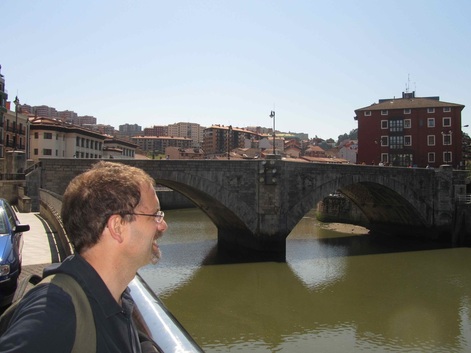
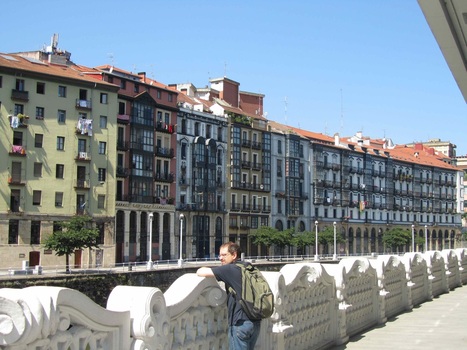
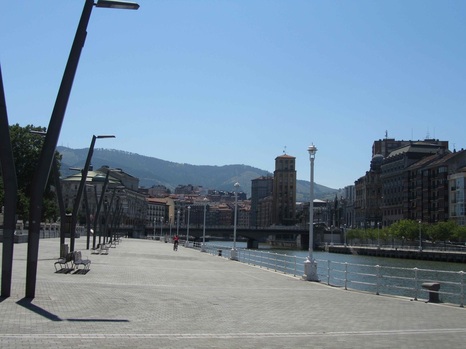
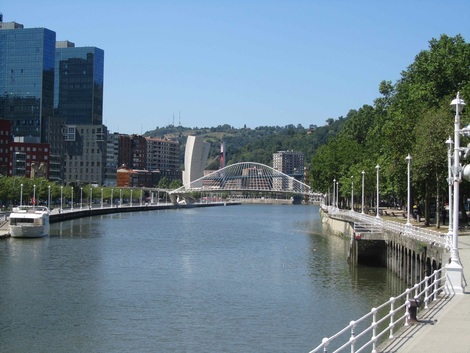
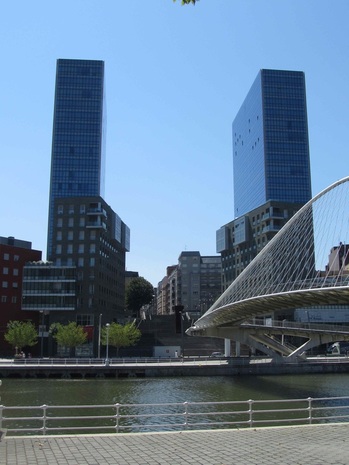
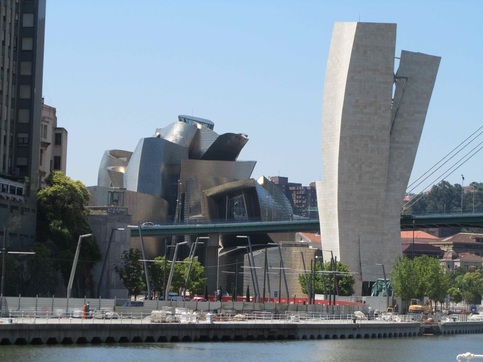
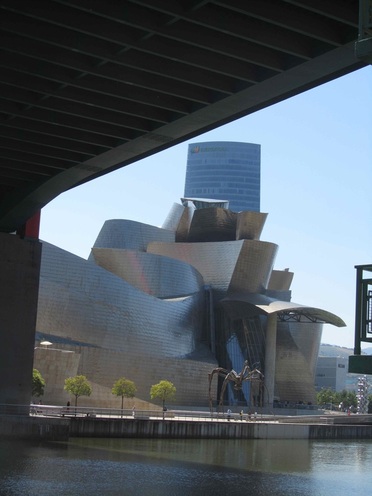
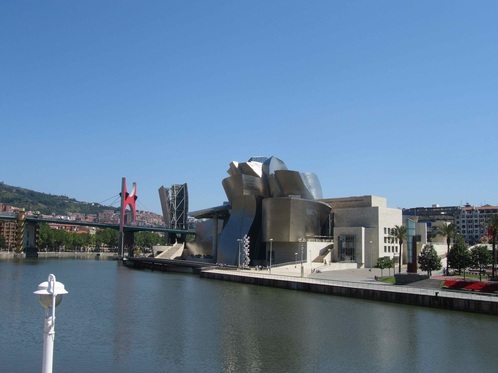
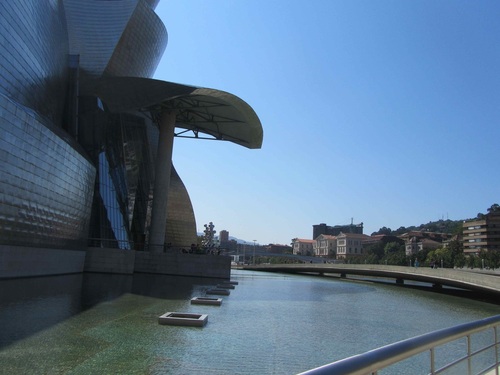
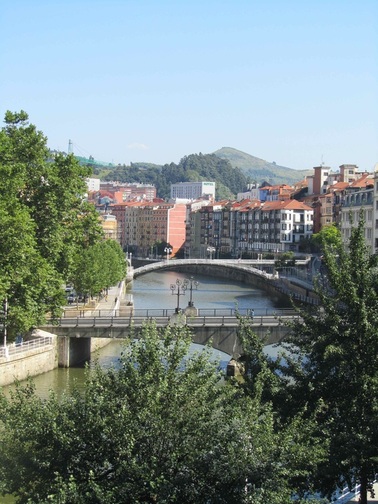
 RSS Feed
RSS Feed